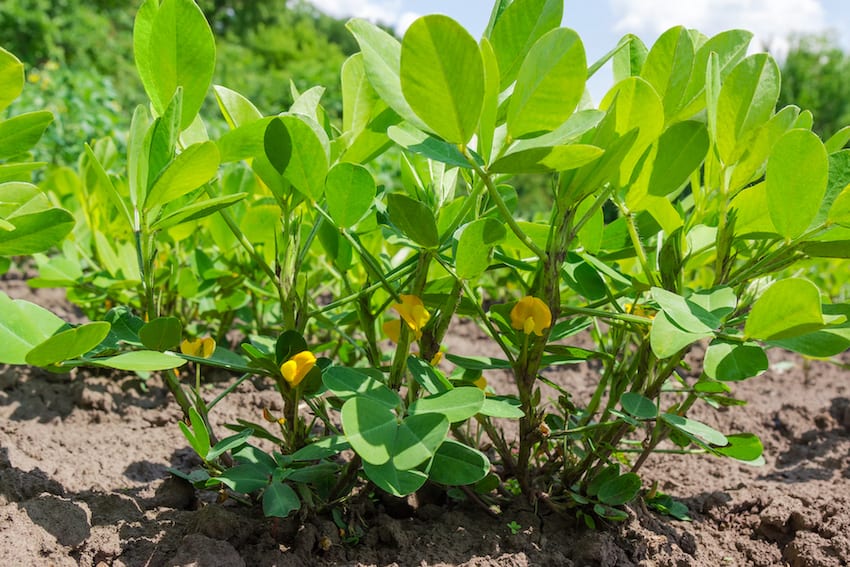This month’s market is characterized by an EU import tax on American peanuts, markets firming up and the end of the plantings in South America and South Africa. Herman Driesens, manager at Amberwood Rotterdam, regularly publishes a peanut market report on LinkedIn. The below is an overview of their findings in December 2020.
The peanut market has become firmer over the past few weeks, which for a big part, is due to the new retaliation measures implemented by the EU (effective Nov 10) on US Peanut imports. Inshell peanuts and kernels (raw/blanched) imports into the EU from the USA are now subject to a 25% import duty. It is still unclear what the consequences of those measures will be going forward and how long they will be in place; nobody knows. As soon as this became a reality, the few Argentine exporters who were able to offer 2020 crop increased their prices with roughly USD 100 per mt.
Argentina finished plantings
After a long period without rain, Argentina basically finished plantings with sufficient rainfall at the right moment. Plantings increased with almost 10% compared to last year, which, however, doesn’t guarantee a 10% bigger crop. Moisture levels in the soil are far from ideal, so, more rain will be needed to ensure a good growing season, and in the end, a smooth harvest and a good quality crop. The La Niña phenomenon (with an 85% probability) indicates that rains will be insufficient during the next 3 / 4 months, which is something to watch closely.
Brazil finally planted about 80%, needs more rain
Brazil was already sold out on 2020 crop for quite some time, and we were told that some Brazilian manufacturers even bought some peanuts from Argentina. Remarkable, since the 2020 crop from Brazil was probably the biggest in history. The 2021 crop plantings are very much delayed due to lack of rain in combination with high temperatures. After the rain they finally received by the end of last week, we estimate that Brazil is 80% planted. Also, Brazil will need timely rains in the next few months to guarantee a decent crop. The late plantings can create yield issues and will put pressure on the harvesting activities and drying process.
United States market remains relatively stable
After a very poor 2019 crop, the US has basically harvested their 2020 crop. Somewhat delayed due to several hurricanes (rain), but overall quality and quantity are supposed to be good. The last November estimate indicated a 3,321,660 short tons crop, which is generally seen as too much. Most shellers expect a 3.1 to 3.2 million short ton crop. Despite the 25% import duty on EU imports, the US market remains rather stable with ongoing buying interest from China for both farmer stock and kernels.
US exports to the EU are usually around 100,000 mtons per year. This volume can be replaced with Argentine and Brazilian origin, provided they will have good crops which is the big question; especially with La Niña expected to play a vital role, to say the least. Any weather issues with the crop in either Argentina and/or Brazil can cause prices to go up fast.
Uncertain crop, but high peanut oil demand from China
After a very firm market for several months, we finally see some cheaper levels in China but the freight rates for 20/40ft containers from China and other Asian countries continue to rise.
Below the latest update from one of Amberwood’s main Chinese suppliers:
“Total production of 2020 crop is said to be 16 million tons farmer stock, but I don’t think that is a reliable figure, my estimation is that total production can be 13-14 million tons maximum!! Quality of new crop varies in different provinces, Shandong origin is suffering from excessive rainfall in August/September, and total production is below expectation, while production in Liaoning/Jilin is not affected that badly, despite the two typhoons in September. The moisture content of the new crop, however, remains high and increased concern over the percentage of frozen kernels.
Local demands remain stable, mainly for Hsuji’s, demands from wholesale market increased in certain cities, which kept the price of HSUJI 40/50 and 50/60 high. Exporters are facing more challenges than local demands due to the quick increase of the market and lack of demand. A strong Chinese currency and lack of shipping space worsened the situation, and we were told that the sea freight market would remain bullish at least until next January/February.
Farmer stock availability, however, remains high so far, especially in northeast China. The production in this area is a better and higher percentage of jumbo size, which is good news, and we noticed higher moisture and a higher percentage of frozen kernels as well. The sufficient farmer stock is partly due to farmers’ reluctance to sell, as the price increased too quickly in October. On the other hand, exporters who rely on northeast China are concerned with quality and price and prefer to buy the minimum volume the need for delivery; I think that is why the price for Virginias eased a little comparing with weeks ago.
European customers seem not prepared for this, and I think that they may be back to the market in January, which may push prices slightly higher again. I am expecting that the market may ease in the second quarter of next year; though not entirely confident.”
The expected big crop in India suffered from heavy rains but it is still big. Prices are relatively high due to the ongoing buying interest from China.
La Niña brings favorable conditions for South Africa
From South Africa, Amberwood received the following report:
“2020 harvest – The final figure for 2020 crop production is 50 080 mt. Planting conditions were very dry, and only 37500 ha was planted. (Normal hectares – 50 000 to 55 000ha).
2021 harvest – The planting season for 2021 crop started early, with favorable moisture conditions at the beginning of November.
- Positive – Rains continue with good moisture. The La Niña weather condition usually means above-average rainfall for South Africa.
- Negative – Low night temperatures are ongoing, resulting in slow germination and lower stand of seedlings. However, the stand is ok and nothing to be worried about.
Total planted hectares for 2021 crop is estimated at 40 000ha. We will only know in January. We estimate that it will be 44 000 hectares at most.
High global commodity prices of Soybeans and Maize, results in the lower than typical hectares for groundnuts, especially in the Hoopstad/Free State area. More hectares are rather planted with either Soybeans or Maize.
Should conditions remain favorable for the rest of the peanut production season, we expect a crop of 50 000 – 65 000mt. South Africa needs 70 000 ton to be self-sufficient. Time will tell to be more specific on estimation. It is still very early, but weather forecasts are very positive.
So, we expect to have at least 5 000 to 8 000 ton high-quality product for export to Japan and the EU. South Africa will probably import some product for peanut butter and roasting later in the season.“




 Westplein 58
Westplein 58



 We use cookies to ensure you get the best experience on our website. For more information, please read our
We use cookies to ensure you get the best experience on our website. For more information, please read our